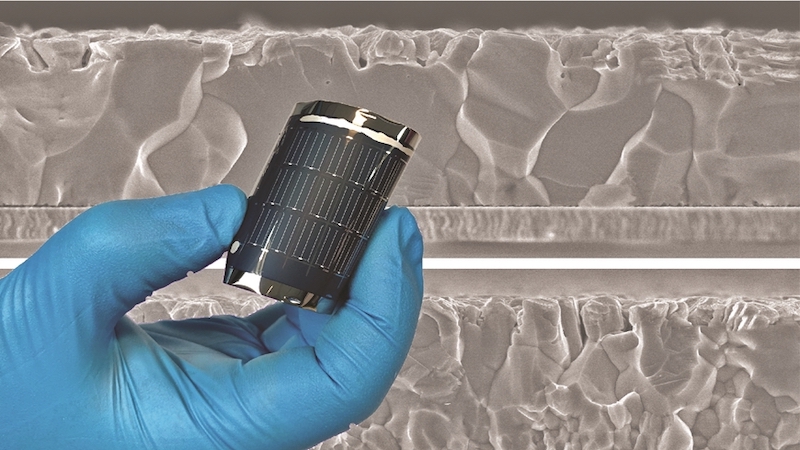Solar cell record: Flexible solar cells achieve record levels of efficiency
Researchers have succeeded in increasing the efficiency of flexible solar cells to over 22 percent. This corresponds to a new record. Conventional solar systems meanwhile achieve a value of 26 percent.
Solar energy is becoming increasingly important. According to a report by the Fraunhofer Institute for Solar Energy Systems (ISE) the expansion of capacity to 215 gigawatts by 2030 and 400 gigawatts by 2040 is necessary. Because current systems currently only generate around 59 gigawatts.
But what if at some point there is no more space available? Flexible solar cells could then be a solution. That technology is developing at an amazing speed, show current research results.
While conventional silicon solar cells achieve an efficiency of 26.7 percent, flexible cells still have some weaknesses. Ten years ago, efficiency was still around 20 percent. Using a new production method, the researchers have now achieved a new record level of efficiency.
Flexible solar cells with new record efficiency
In tests at the Fraunhofer Institute, the flexible cells achieved an efficiency of 22.2 percent. While that may sound small, it represents another step towards commercialization. This, in turn, is made possible by a new semiconductor layer that efficiently converts the incoming rays of the sun into electricity.
The possible uses of the new cells are diverse. Roofs could be covered with the thin cells as well as building facades and electric vehicles. This would also increase the security of supply in the power grid. After all, in principle anyone can become self-sufficient.
Many solar systems will soon need an upgrade
In addition to conventional silicon-based solar systems, perovskite is gaining increasing attention. The material is just as efficient, but much more durable in the long run. It is possible that the technology will therefore prevail in the long term, especially since many Photovoltaic systems will soon reach their zenith.
Then you need alternatives that can be used sustainably and flexibly. It therefore does not seem unreasonable that flexible solar cells will increasingly be used in the future.
Also interesting:



![These are the results [Anzeige]](https://www.basicthinking.de/blog/wp-content/uploads/2023/05/bluetti-header.png)